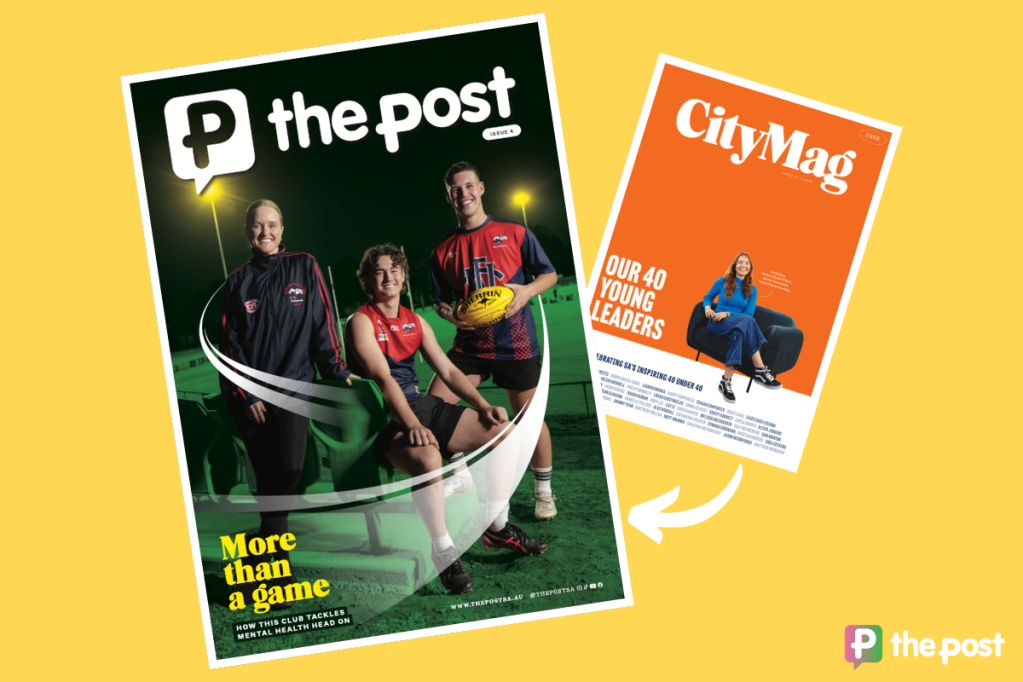10 lessons for SA from Port Adelaide’s revival

South Australia is to the nation what Port Adelaide is to the AFL – the Power circa 2012 that is.
Broke, a laughing stock, no credible game plan, no future – but a proud history and supported by a legion of rusted-ons who aren’t going anywhere.
But back to Port Power.
In 2012, the team endured tiny crowds, a terrible game style, and barely any marketing to speak of. It was reliant on handouts to survive, and topped it off with a humiliating loss to Greater Western Sydney.
South Australia today is shaking an empty piggy-bank, the rest of the nation enjoys having a chuckle at our expense, and we’re struggling to stay in front of that other perennial struggler Tasmania on economic indicators.
Port Adelaide managed to turn things around very quickly – can the state as a whole do the same? Maybe not, but these lessons from Port’s revival can’t hurt.
1 Play the kids
Port Adelaide has the third youngest list in the AFL – South Australia as a whole has a disproportionate number of people who still remember button-up boots and drop kicks.
Just as the coach’s belief in kids like Chad Wingard and Oliver Wines has provided the energy at the heart of Port’s resurgence, South Australia needs to take a chance on its dynamic younger generation (and attract the brightest from elsewhere).
2 Build a Portress
You might like
The boost in crowds and esteem caused by the opening of Adelaide Oval has fed beautifully into the club’s revival.
Maybe Liberal leader Steven Marshall was on to something when he proposed that state infrastructure investment needed to be guided by an independent board and rigorous cost-benefit analysis.
Having said that, when we build something let’s not skimp. No more one-way freeways.
3 Clean out the back room boys
As well as bringing in super-coach Ken Hinkley, Port Adelaide totally regenerated its off-field operations. Jay Weatherill has started doing the same, bringing in big name recruits Don Russell and Michael Deegan to head up two key government departments.
He’s now well on the way to an historic agreement with the public sector unions to end tenure in the state bureaucracy. He needs to keep going, and find ways to make the SA public service attractive to more of the best bureaucrats in Australia.
When we have the best backroom team, we’ll get the best results on the field.
4 Mobilise the true believers
Port saviour David Koch has noted that it was easy – in the beginning – to make some progress. From rock bottom, the only way is up.
But the real magic comes when each smaller victory – the securing of credible sponsors, the appointment of a solid CEO etc – starts to build on the previous one to achieve a sense of unstoppable momentum.
Before Ken Hinkley and his boys had won a single game, there was already a sense that Port Adelaide was on the way up. The perception then became reality.
The fact was that Port supporters were primed and ready to go as soon as the club’s fortunes turned.
South Australians are a bit the same: we love positive additions to the city and the state (look at Adelaide Oval). Despite our whinging, we do actually believe in this place otherwise we wouldn’t live here. But we need to string together some victories, no matter how small to begin with.
5 Never, ever, give up
Stay informed, daily
Port Adelaide has always been adept at creating believable mythologies, which then take on at least enough truth to be useful in creating change.
Ken Hinkley looks and sounds more like a salt-of-the-earth cockie than a smooth spin doctor, but his pithy phrases have given his marketing department a production line of T-shirt slogans. “We will never, ever give up,” is genius in its simplicity, its inspirational qualities and that fact that it can’t really be measured or disproved (short of players sitting down mid game). “You get what you deserve,” is another of his favourite sayings. Again, you can’t argue with that and the results – whatever they are – will always fit this version of the truth.
Nevertheless, the power of Hinkley’s catch-phrases are that he actually believes in them – and those around him have also bought in. Rather than lame exhortations to “stick up for South Australia”, our leaders should aim to inspire based on deep conviction.
At the same time, our leaders also shouldn’t be afraid to give us an old-fashioned bake when we get complacent.
As Port shows, fearless leadership is essential.
6 Use the handouts wisely
In its dark days, Port Adelaide’s survival was dependent on handouts from the AFL. South Australia depends on an unequal carve-up of national resources. There’s no shame in this, as long as we invest the money wisely. Don’t spend the dough recruiting ageing hacks at the ends of their careers.
Port – eventually – spent up on the stuff that helps create a brighter future. South Australia needs to do the same.
7 Neutralise weaknesses
Port Adelaide in 2012 was slow on the outside; ponderous and predictable in game style. New coach Hinkley identified these problems and immediately chased after players that would fill that void.
Modern South Australia is conservative and tends to move slowly: need I say more?
8 Use science to gain an edge
One of Port Adelaide’s sharpest weapons is its fitness coach Darren Burgess, who has used cutting edge knowledge gleaned here and overseas, to create one of the fittest teams in the AFL.
Imagine if South Australia had the best and brightest scientists and innovators working here? The SAHMRI investment is a start, but it contrasts with the state’s stagnating investment in agricultural research and development which has been going on for several decades. It’s time to end that trend.
9 Ditch the tarps and start marketing
Port Adelaide, at its lowest ebb, struggled to find a credible marketing message. The old stand-by of Port tradition (the so-called “creed”) didn’t make much sense when its dispirited team was getting spanked every week. When the crowds inevitably disappeared, it took the near-fatal decision to cover swathes of empty seats with tarpaulins, forlornly decorated in club colours. It was humiliating and served only to highlight the club’s problems.
South Australia tends to highlight our weaknesses in attracting business (the high cost of power and water, for example), while downplaying our strengths (the such as the low cost of land and labour).
We’re not totally behind our competitors in the marketing department. The KI, Barossa and Adelaide ad campaigns have been brilliant and, in the latter case, strikingly weird. More please.
10 Play an attractive game
In 2012, Port’s “game plan” devolved into a competition-wide joke, with confused players chipping the ball around the half-back line until they made the inevitable mistake and gifted the ball to the other team. For the past two years, they’ve played a style of football that even their most fervent haters grudgingly admit is thrilling to watch.
South Australia needs some excitement and pizzazz. The arts, and social and industry innovation have provided that spark for us in the past – they can again.








